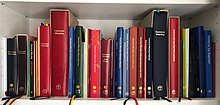Common Worship

Common Worship is the name given to the series of services authorised by the General Synod of the Church of England and launched on the first Sunday of Advent in 2000. It represents the most recent stage of development of the Liturgical Movement within the Church and is the successor to the Alternative Service Book (ASB) of 1980. Like the ASB, it is an alternative to the 1662 Book of Common Prayer (BCP), which remains officially the normative liturgy of the Church of England.
It has been published as a series of books, rather than a single volume, offering a wider choice of forms of worship than any of its predecessors. It was drafted by the Church of England's Liturgical Commission; the material was then either authorised by General Synod (sometimes with amendments) or simply commended for use by the House of Bishops.
Series
The main Common Worship book is called Common Worship: Services and Prayers for the Church of England. It was published in 2000 alongside Common Worship: President's Edition. These volumes contain the material for Sunday services, but unlike the ASB, contain no readings.
The third book to be published (also in 2000), Common Worship: Pastoral Services, provides for the first time a range of healing services, as well as revised provision for weddings and funerals. The former has a completely rewritten preface that no longer describes the threefold purposes of marriage and is much more secular in tone. It includes, for the first time, a congregational response to the declarations by the couple and a long nuptial blessing. The funeral provisions includes material for before and after the service, all completely rewritten. The funeral now includes an optional penitential section, no longer has a required psalm and includes set intercessions. It also allows for a eulogy by one of the mourners, a new departure, at the beginning of the service.

In 2005 the fourth book, Common Worship: Daily Prayer, was published. The form and style of daily morning and evening prayer no longer shows the influence of the BCP, but the work of the English Franciscan community and its book Celebrating Common Prayer. The offices are not dissimilar to those of the Roman Catholic Church. Penitence becomes optional, as does the Creed; the Te Deum disappears almost completely, and a Gospel canticle—the Benedictus in the morning and the Magnificat in the evening—follows the reading(s); there is a wide range of intercessions; collects are provided for lesser festivals (unlike in the main book); and there is a psalter. Both the book and the new daily lectionary were tried out in parishes before final publication.
In 2006, three more volumes, Common Worship: Christian Initiation, Common Worship: Ordination Services and Common Worship: Times and Seasons, were published. In the first, there is provision for Baptism, Confirmation, and related rites (including Reconciliation). In the second, there are rites for the ordination of deacons, priests and bishops. In the third, there is provision for all the seasons of the church's year, including sections on the Agricultural Year and Embertide.[1]
The final book, Common Worship: Festivals, was published in 2008 and provides propers for all the Festivals and Lesser Festivals of the Church of England's calendar.
Content and style
Common Worship is published in electronic, as well as paper form, with the intent that congregations can assemble their own orders of service and extend them with prayers and readings.[2]
See also
References
- ^ Church of England, Embertide
- ^ Morgan, John (2003). "An account of the making of Common Worship: Services and Prayers for the Church of England". Typography papers. 5: 33–64. CiteSeerX 10.1.1.130.5486.
